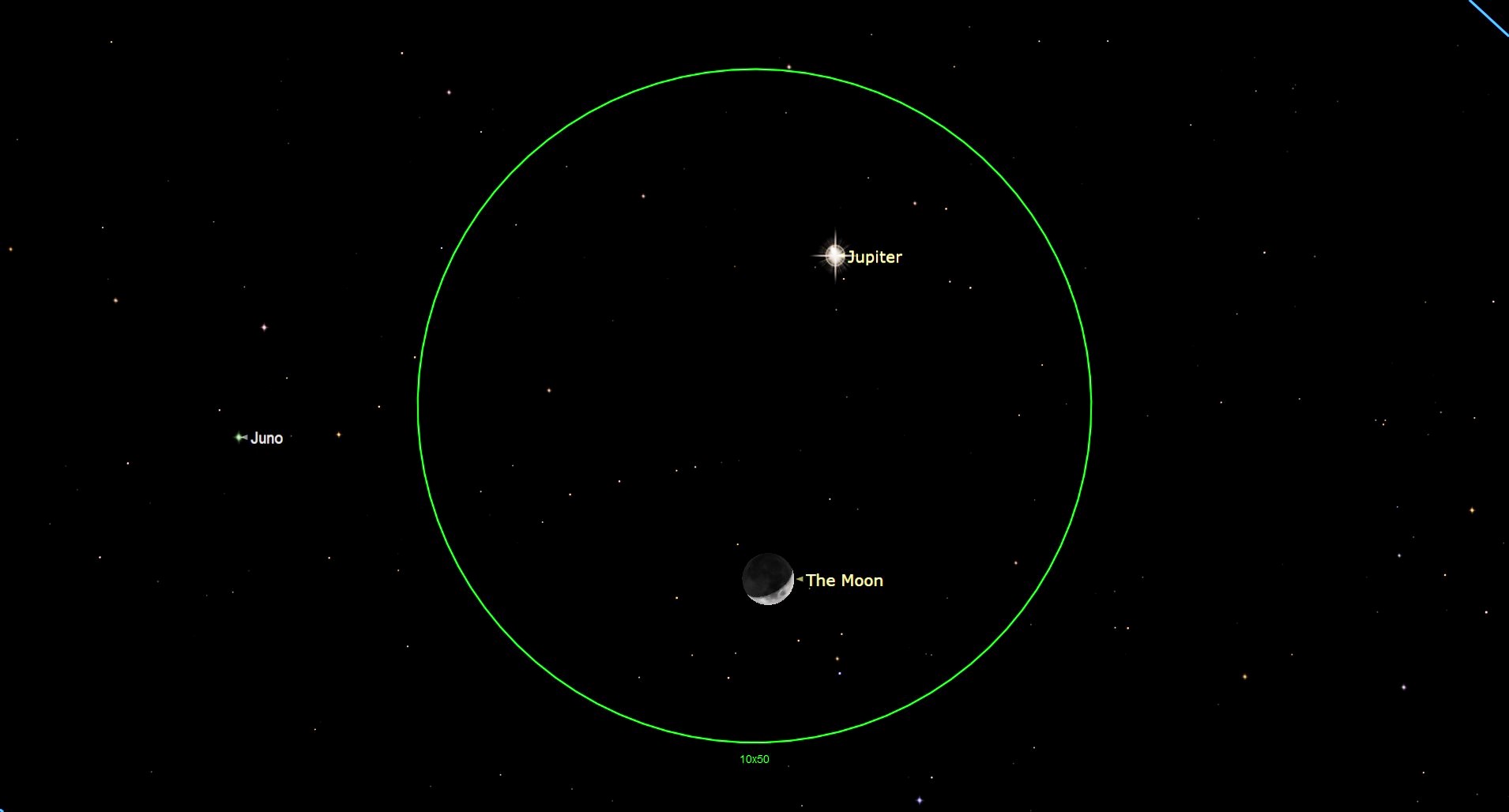See the moon meet up with Jupiter tonight (Jan. 25)
During the conjunction, the two astronomical bodies will also make a close approach in the night sky.

On Wednesday (Jan. 25) the moon will meet up with the solar system's largest planet Jupiter in the night sky. The two astronomical objects will share the same right ascension in the sky in an arrangement that astronomers call a "conjunction." At the same time, the moon and Jupiter will also make a close approach, technically called an appulse.
According to In-the-Sky, the 5-day-old waxing crescent moon will pass less than 2 degrees to the south of Jupiter during the conjunction while the two objects will be in the constellation of Pisces. The moon will have a magnitude of -11.2 and Jupiter -2.2, with the minus prefix indicating particularly bright objects over Earth.
From New York City, the conjunction between the moon and Jupiter and their close approach will become visible at around 7:49 p.m. EST (0049 GMT on Jan. 26) and the two objects will set at around 10:00 p.m. EST (0300 GMT on Jan. 26).
Related: What is the moon phase today? Lunar phases 2023

Want to look at Jupiter up close? We recommend the Celestron Astro Fi 102 as the top pick in our best beginner's telescope guide.
During the conjunction, the moon and Jupiter will still be too widely separated to be seen with a telescope despite appearing close together to the unaided eye. The conjunction will be observable with binoculars, however, and observers in good viewing conditions should be able to see the arrangement without any optical aids.
Jupiter is not the only solar system planet that enjoys a regular conjunction with the moon. Because the moon moves rapidly along an imaginary line in the sky called the ecliptic that takes it past the constellations, lunar conjunctions with the solar system planets happen around once a month.

The planets of the solar system move much more slowly along the ecliptic meaning that the conjunctions between the planets, while they do happen, are far rarer.
Get the Space.com Newsletter
Breaking space news, the latest updates on rocket launches, skywatching events and more!
For example, a great conjunction is a conjunction between Jupiter and its fellow gas giant Saturn that occurs roughly every 20 years. During a great conjunction, Jupiter overtakes Saturn in its orbit.
Even rarer are conjunctions between Uranus and Neptune which take 84 years and 165 years, respectively, to complete a trip past the constellations. This means that a conjunction between the two planets occurs only once every 171 years, according to In-the-Sky.
The next planetary conjunction for Jupiter is with Venus on March 2, 2023. Before that, the moon will meet up with Mars during a conjunction on Jan. 31, 2023.
If you're hoping to spot the conjunction between the moon and Jupiter, our guide on the best binoculars is a great place to start, as the two objects will be too widely separated for a telescope. If you are looking to study both objects individually, then Space.com's guide on the best telescopes may be useful. For skywatchers aiming to snap photos of the night sky, check out our guide on how to photograph the moon, as well as our best cameras for astrophotography and best lenses for astrophotography.
Editor's Note: If you get a great image of the conjunction between the moon and Jupiter, and would like to share it with Space.com's readers, send your photo(s), comments, and your name and location to spacephotos@space.com.
Follow us @Spacedotcom, or on Facebook and Instagram.
Join our Space Forums to keep talking space on the latest missions, night sky and more! And if you have a news tip, correction or comment, let us know at: community@space.com.

Robert Lea is a science journalist in the U.K. whose articles have been published in Physics World, New Scientist, Astronomy Magazine, All About Space, Newsweek and ZME Science. He also writes about science communication for Elsevier and the European Journal of Physics. Rob holds a bachelor of science degree in physics and astronomy from the U.K.’s Open University. Follow him on Twitter @sciencef1rst.










